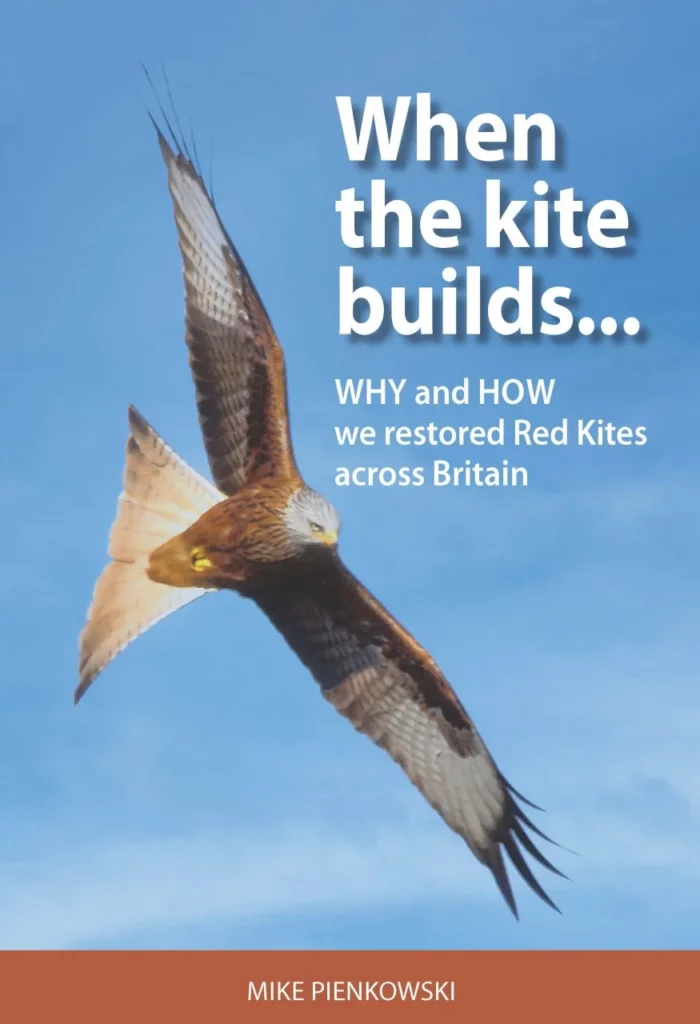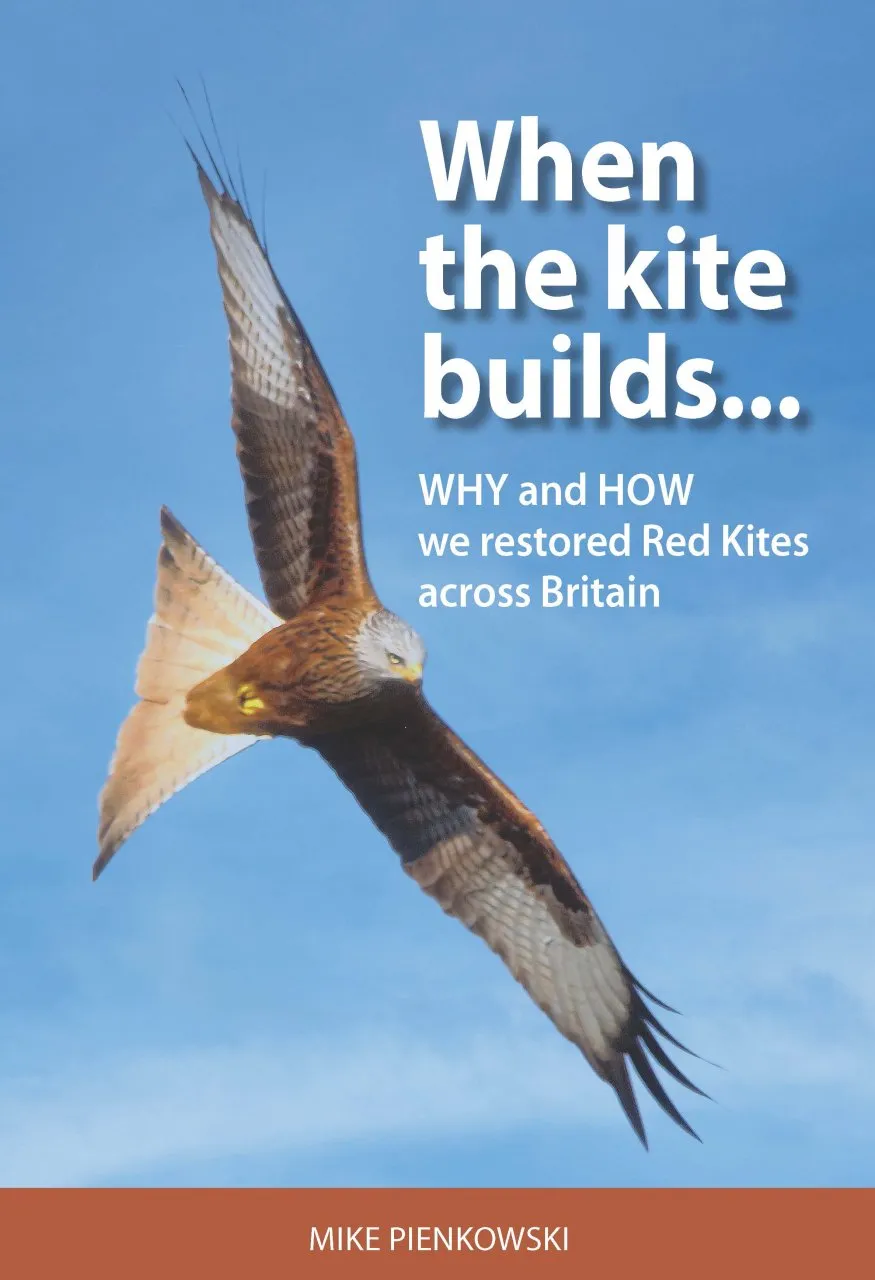Mike Pienkowski was pivotal in setting up the Red Kite reintroduction programme in the late 1980s, and chaired the group overseeing the initial, experimental stage of the project. His book deals with all aspects of the work, from early discussions about whether it would succeed (many thought not) to the practicalities of establishing a team, choosing the first release sites and then collecting, rearing and releasing the birds. His photographs span several decades, showing the first nestlings to be imported, as well as free-flying individuals and birds at the nest in England.
Part of the story is told by reproducing policy papers, as well as lengthy extracts from press releases, project reports, and the minutes of meetings. I noticed pages from a 1999 leaflet which I wrote about the Midlands project, providing a pair-by-pair account of the fledgling population. Others will no doubt recognise their own contributions. Is this too much fine, historical detail for a general audience? Perhaps, though this material helps to show how the project unfolded in real time.
The writing is at its most animated when we hear from the author himself. One of his motivations for producing the book is, as he puts it, the ‘imperfect corporate memories’ of the bodies responsible for delivering the work. The break-up of the old Nature Conservancy Council is described in detail, relevant because of uncertainties over where the project would sit following the split, and who would run it. Old grievances bubble up to the surface, from the battle with government over afforestation of the Flow Country, to internecine warfare between the new conservation bodies. For anyone with a connection to events at the time, it makes for an interesting, if sobering, read.
The book has been a long time in the making, and there is less attention to detail with more recent information. The 2020 population is given as 1,800 pairs for the UK, but the true number is much higher than that. The ‘official’ estimate for as far back as 2016 was 4,400 pairs. The current figure is probably nearer to 8,000 pairs and Britain now supports around a quarter of the global population. Numbers would be higher still without the intensive persecution that continues to this day on driven grouse moors, killing kites aplenty, as well as the harriers and eagles.
The book rounds off with an overview of what has been achieved. We have hastened the return of the Red Kite, obviously enough. More than that, the work has helped to focus minds (and funds) on tackling illegal persecution, secondary poisoning by rodenticides and other issues that impact on a wide range of species. It has generated positive publicity and increased public interest in kites and in conservation more broadly. Lessons from the kite work have been applied to restoration projects involving a whole suite of animals, some of which are described. Nonetheless, one question hangs uneasily in the air, like a kite floating into the breeze, flexing its long tail and considering the landscape, but unsure which way to turn. It’s not a question for those directly involved, though this book is essential reading for anyone seeking their own answer. Here it is: given the rapid increase in the Welsh kite population in the last 30 years and its natural spread into western England, was all the money, time and effort worthwhile, or could we (should we?) have been just a little more patient?

